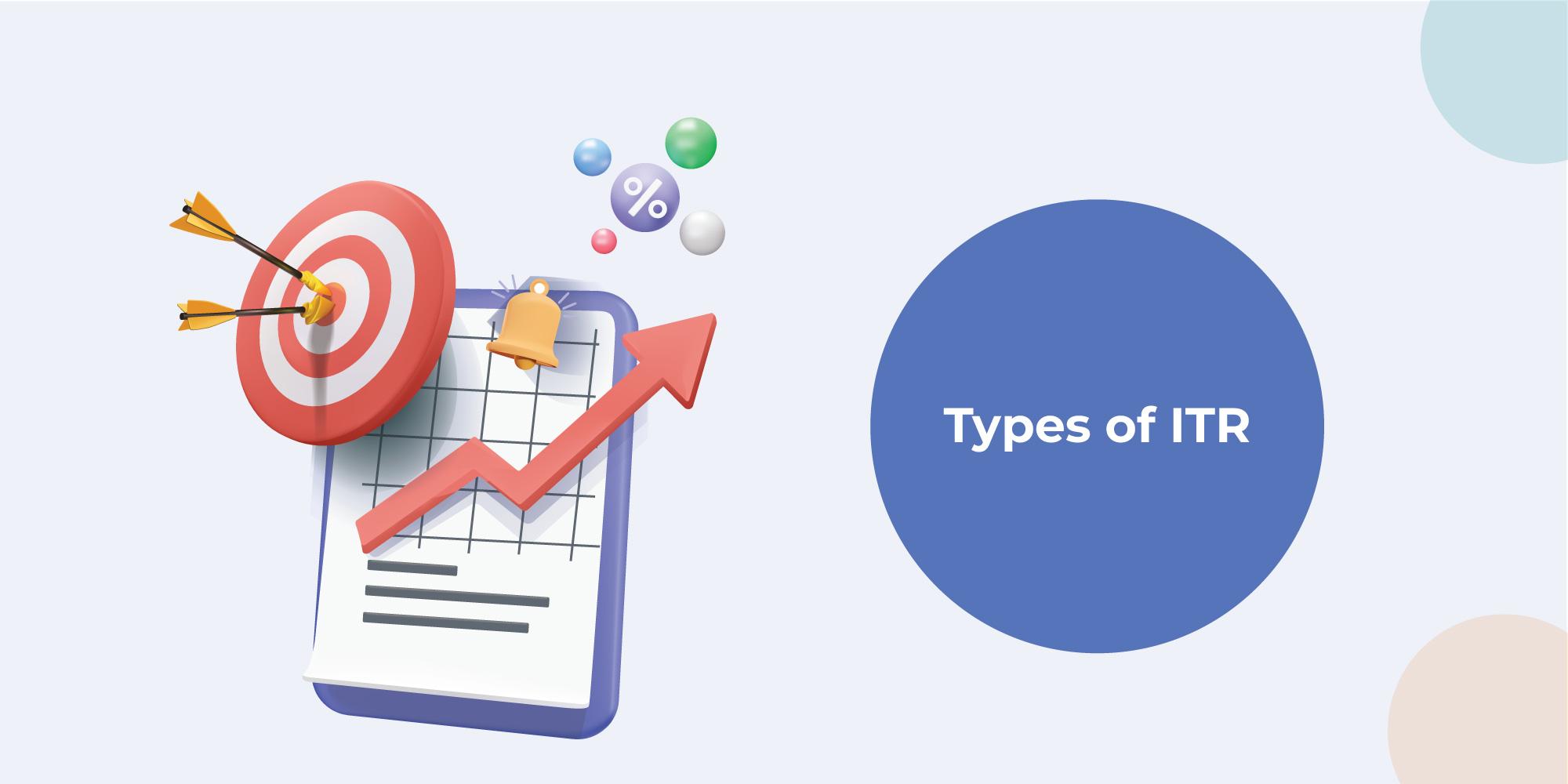Types of ITR Forms in India – Which ITR Should You File?
Reviewed by: Fibe Research Team
- Updated on: 16 Apr 2025
Reviewed by: Fibe Research Team

To declare earned income and pay the applicable tax to the Income Tax Department, every taxpayer has to file one of the seven types of Income Tax Return forms within the prescribed due date. These ITR forms contain the taxpayer’s income, expenses and other essential tax details, helping the Department and the taxpayer calculate and assess the tax liabilities easily.
The ITR form that you need to file depends on your total income, source of income and your category. Filing the returns on time helps avoid the penalties levied for delayed returns and also aids in claiming tax refunds.
To understand these forms and which ITR form you need to choose, read on.
Here are the highlights of different types of Income Tax Return forms:
If you are a resident individual earning an income of less than or equal to ₹50 lakhs, you need to file this form. Here is a quick snapshot of its applicability:
However, if you are a non-resident Indian or earning income from multiple house properties, you are not eligible to file ITR-1.
ITR-2 is one of the types of Income Tax Return forms that specifically suit all individuals and HUF entities falling under the following applicability parameters:
If you are an individual with income from Business or Profession, you cannot file ITR-2. You will have to file from other applicable ITR forms.
This type of ITR form is exclusively suited for HUF entities and individual taxpayers meeting the required eligibility criteria:
Simply put, HUFs or individuals not eligible for ITR-1, 2 and 4 should file ITR-3.
Wondering which ITR form to file as a business owner or professional earning up to ₹50 lakhs? The answer is the Sugam Form. Here is the applicability of this ITR form for individuals, HUFs and partnership firms (other than LLPs):
All trusts, business firms and other corporate entities must file their returns using this form. The following entities can file ITR-5:
This ITR form is ideal for companies to file their tax returns electronically. All companies that do not claim exemption as per Section 11 of the Income Tax Act can file this form.
All individuals and entities who need to file their returns under the following sections must choose file ITR-7:
Here is a tabular overview of which type of Income Tax Return form you need to file:
| Type of Form | Eligible for | Source of Income |
|---|---|---|
| ITR-1 | Resident Individuals and HUFs | Salary, Rent from House Property and Income from Other Sources |
| ITR-2 | Individuals and HUFs | Salary, Rent from House Property, Income from Capital Gains, Foreign Assets and Other Sources |
| ITR-3 | Individuals, HUFs and partners in a firm | Salary, Rent from House Property, Income from Capital Gains, Business or Profession, Foreign Assets and Other Sources |
| ITR-4 | Individuals, HUFs and Firms | Salary, Rent from One House Property, Income from Business or Profession (Under Presumptive Tax) and Other Sources |
| ITR-5 | Partnership Firm or LLP | Rent from House Property, Income from Capital Gains, Business or Profession, Foreign Assets and Other Sources |
| ITR-6 | Company | Rent from House Property, Income from Capital Gains, Business or Profession, Foreign Assets and Other Sources |
| ITR-7 | Trusts, Political Parties, Hospitals, Media Agencies and Educational Institutions | Rent from House Property, Income from Capital Gains, Business or Profession, Foreign Assets and Other Sources |
You should file an ITR within the predetermined date for the following reasons:
Having clarity about these ITR forms helps you file the right form during an assessment year, avoiding the hassles of going through the process again. Similarly, you need to be aware of the various tax benefits you can earn through investments and loans. Knowing the essential details can help you claim tax exemptions and save money.
However, if you are ever short on funds, you can rely on Fibe. Apply for a Personal Loan in just 2 minutes without submitting any physical paperwork. You can get funds up to ₹5 lakhs at affordable rates, helping you meet your needs easily. Download our Personal Loan App or register on the website to get started.
ITR-1 or the Sahaj form is ideal for a salaried person earning income below ₹50 lakhs and ITR-2 when earning income above ₹50 lakhs.
The right form to file if you earn a salary and make capital gains from share trading is ITR-2.
There are seven different types of forms to file, out of which the first four apply to individuals and the rest to companies, trusts and other entities.
The seven types of Income Tax Return forms include the following:
ITR-1 is applicable for individuals earning income below ₹50 lakhs, while ITR-2 is ideal for individuals generating income above ₹50 lakhs.
If you are an individual earning income of up to ₹50 lakhs, you need to file ITR-1. On the other hand, if you are running a business generating an income of up to ₹50 lakhs, ITR-4 is the form you need to file.
All individual taxpayers and members of HUF earning an income of less than ₹50 lakhs a year can file ITR-1.
All individual taxpayers and members of HUF earning an income exceeding ₹50 lakhs can file ITR-2.
All individual taxpayers and members of HUF who are operating as partners in a firm generating income without conducting any business can file ITR-3.